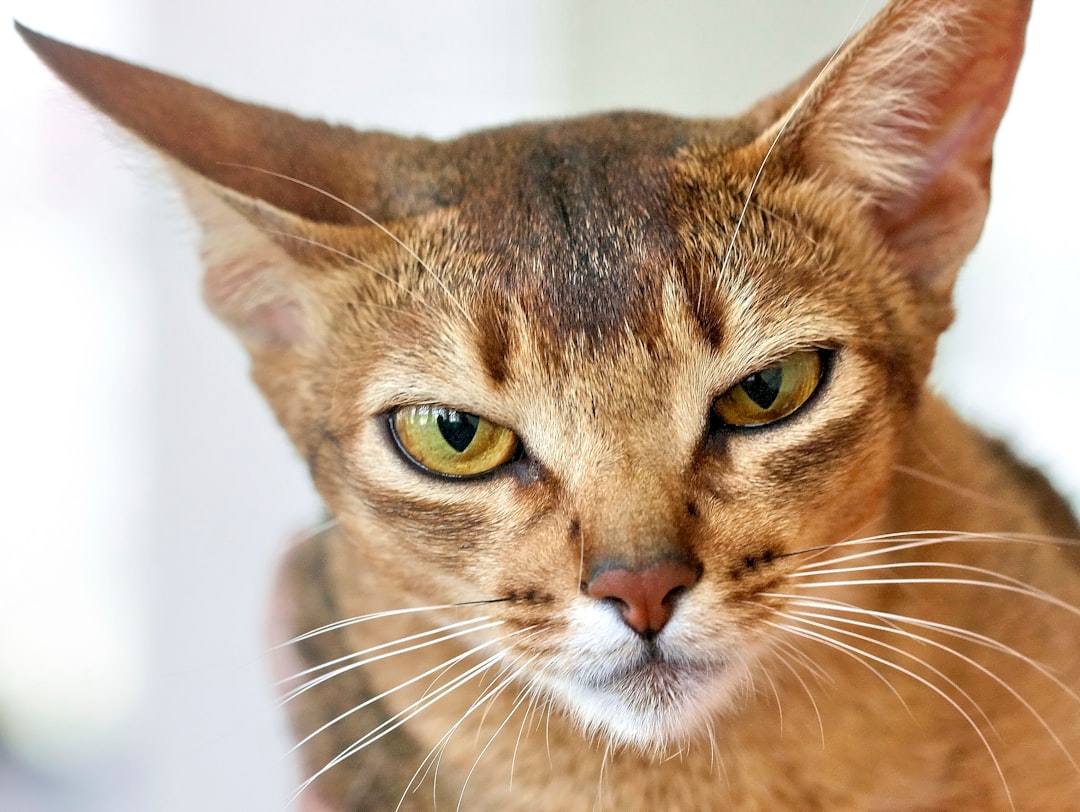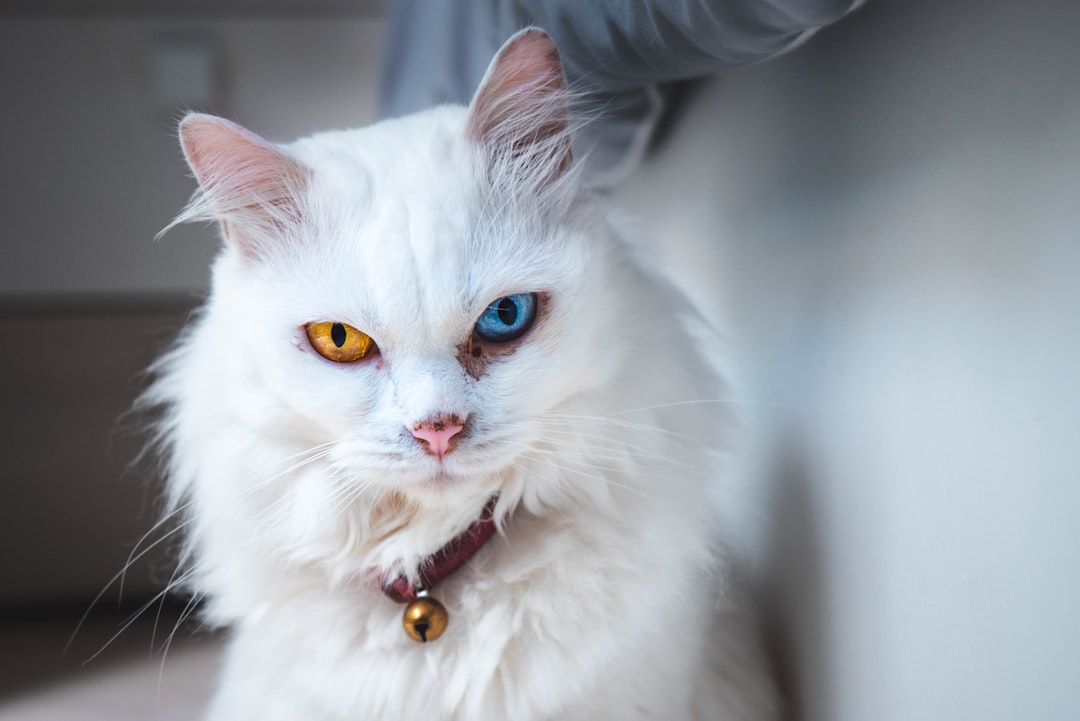When it comes to enhancing the health and appearance of your feline companion, Cat eye surgery stands out as a significant procedure for correcting a range of eye issues. If you’re considering this operation for your cat, understanding what to expect can greatly alleviate concerns and ensure a smoother experience for both you and your pet. From pre-surgery preparations and the surgical procedure itself to post-operative care and recovery timelines, each phase is crucial to achieving the best possible outcome. Moreover, knowing how to manage pain and discomfort during recovery and the importance of follow-up appointments can help you take proactive steps in your cat’s healing journey. In this blog post, we will delve into each aspect of cat eye surgery, providing insights and answers to your frequently asked questions, so you can feel fully informed and prepared.
Understanding Cat Eye Surgery
What is Cat Eye Surgery?
Cat eye surgery is a specialized cosmetic procedure designed to enhance the shape and appearance of the eyes, primarily aiming for an elongated and lifted look that resembles a cat’s eye. This surgical intervention involves altering the eyelids to provide a more youthful and vibrant appearance. Surgeons utilize techniques such as incisions along the eyelid or cheek to achieve the desired aesthetic results while ensuring the functionality of the eyes is preserved.
Reasons for Undergoing the Surgery
Patients may opt for this procedure for various reasons, including:
| Reason | Description |
|---|---|
| Aesthetic Enhancement | Many seek surgery for a more appealing eye shape, contributing to overall facial symmetry. |
| Age-Related Changes | As skin elasticity decreases with age, eyelids may sag; this procedure addresses those effects. |
| Psychological Impact | A significant number of individuals report improved self-esteem and confidence post-surgery. |
| Medical Concerns | In some cases, drooping eyelids can obstruct vision, necessitating surgical intervention for clarity. |
Understanding the motivations behind pursuing this procedure is crucial, as it allows individuals to align their expectations with the potential outcomes, thus ensuring a more satisfying surgical experience. Prior to deciding on surgery, it is advisable to consult with a qualified professional to discuss personal goals and suitability for the operation.
Pre-Surgery Expectations
Consultation with Your Vet
Before proceeding with Cat eye surgery, it’s crucial to have an in-depth consultation with your veterinarian. During this appointment, your vet will assess your cat’s overall health, discuss why the surgery is necessary, and explain the expected benefits. Essential tests, such as blood work or imaging, may be conducted to ensure your cat is a suitable candidate for the surgery. It’s also an excellent opportunity to ask any questions you may have about the procedure, anesthesia, and potential risks.
Pre-Operative Preparations
Preparing your cat for surgery is a critical step in ensuring a smooth experience. Here are some important points to note:
| Preparation Steps | Description |
|---|---|
| Fasting | Your cat may need to fast for a recommended period before surgery, typically 12 hours, to prevent complications during anesthesia. |
| Medical History Review | Provide a comprehensive medical history to your vet, including any medications or previous health issues your cat may have. |
| Comfort Items | Bring along your cat’s favorite toy or blanket to help them feel more secure post-surgery. |
| Home Environment Setup | Prepare a quiet and safe recovery area at home, free from hazards where your cat can recover comfortably. |
By following these pre-operative guidelines, you can help alleviate your cat’s anxiety and contribute to a smoother surgical process. Ensuring that both you and your pet are well-prepared will lead to a more successful outcome in the long run.
The Surgical Procedure
What Happens During the Surgery?
The Cat eye surgery is a specialized procedure tailored to enhance the aesthetic and functional aspects of your feline’s eyes. Typically, the surgery begins with a thorough examination and the administration of anesthesia, ensuring your cat remains comfortable and pain-free throughout the process.
- Preparation and Anesthesia:
- Your veterinarian will prepare the surgical site, often the eyelids and surrounding areas.
- After administering anesthesia, the vet will monitor vital signs closely to ensure safety.
- Incision and Alteration:
- Once stabilized, a precise incision is made in the eyelid or surrounding tissue.
- The vet reshapes the eyelids or creates the desirable ‘cat eye’ appearance through careful adjustments.
- Closure:
- At the conclusion of the procedure, the incisions are meticulously closed using sutures.
- This step is crucial for reducing healing time and ensuring minimal scarring.
Types of Anesthesia Used
The choice of anesthesia is crucial for the safety and comfort of your cat during cat eye surgery. Here’s a comparison of the commonly used types:
| Type of Anesthesia | Usage | Advantages |
|---|---|---|
| General Anesthesia | Entirely unconscious (major surgeries) | Provides full pain relief and no awareness during surgery. |
| Local Anesthesia | Targeted area only (minor adjustments) | Reduces recovery time; minimal side effects. |
| Sedation | Relaxation and anxiety reduction | Often combined with local anesthesia for comfort. |
Understanding the surgical procedure and the types of anesthesia can help alleviate concerns and prepare you for the best possible outcome for your cat’s health and appearance.
Post-Surgery Care
Immediate Aftercare
After cat eye surgery, it is crucial to provide proper immediate aftercare to your feline friend to ensure a smooth recovery. Start by monitoring your cat’s behavior closely for any signs of distress. Create a calm and quiet environment, away from other pets and loud noises, so your cat can rest comfortably. It’s essential to follow your veterinarian’s instructions regarding medications and feeding. If your vet prescribes pain relief or antibiotics, administer these as directed to help manage discomfort and prevent infection.
| Task | Description |
|---|---|
| Monitor Activity | Keep your cat calm and limit activity for the first few days. |
| Check Surgical Site | Inspect the incision daily for signs of swelling, redness, or discharge. |
| Follow Medication Plan | Ensure medications are given at the correct times and dosages. |
Signs of Complications
While many cats recover well post-surgery, it’s vital to be aware of potential complications. Look for the following signs:
| Sign | Possible Complication |
|---|---|
| Excessive Swelling | Indicates possible infection. |
| Persistent Crying | May suggest pain that requires management. |
| Loss of Appetite | Could indicate discomfort or issues related to the surgery. |
| Discharge from Incision | Sign of infection; seek vet assistance. |
If you observe any of these symptoms, do not hesitate to contact your veterinarian right away. Early intervention can help address complications promptly and ensure your cat continues on the path to recovery.
Recovery Timeline
What to Expect in the First Few Days
Following cat eye surgery, the immediate post-operative period is crucial for ensuring your pet’s comfort and safety. Cats may experience swelling, mild pain, or disorientation. Here’s a quick overview of what to expect:
| Day | Symptoms | Care Instructions |
|---|---|---|
| Day 1 | Swelling, Discomfort | Monitor closely; keep the area clean. |
| Day 2 | Increased Sleepiness | Provide a quiet, cozy space for rest. |
| Day 3 | Appetite Slowly Returning | Offer soft food and encourage hydration. |
During this period, maintaining a calm environment and limiting your cat’s activity is essential. Follow your veterinarian’s advice regarding any medications prescribed.
Long-term Recovery Process
As the days progress, your cat’s recovery will continue to evolve. Typically, full recovery from cat eye surgery can take anywhere from one to four weeks. Here is a general outline of this timeline:
| Week | Symptoms | Activities |
|---|---|---|
| Week 1 | Reduced swelling, sensitivity | Gradual reintroduction to normal routine. |
| Week 2 | Gradual improvement in vision | Monitor for any unusual behaviors or signs. |
| Week 3-4 | Nearly full recovery | Resume regular activities and check-ins with the vet. |
By the end of the recovery process, most cats will return to their active lives, benefiting from improved vision. Always keep your veterinarian updated on any concerns or changes in behavior during the recovery period for optimal care.
Managing Pain and Discomfort
Pain Relief Options
After cat eye surgery, it is common for your feline friend to experience some level of pain or discomfort. To ensure a smooth recovery, your veterinarian will typically prescribe pain relief medication tailored to your cat’s needs, such as:
| Medication | Type | Common Usage |
|---|---|---|
| NSAIDs | Non-steroidal anti-inflammatory drugs | Reduces swelling and pain |
| Opioids | Stronger pain relief | Reserved for more intense pain |
| Gabapentin | Neuropathic pain relief | Useful for nerve-related pain |
It’s essential to follow your vet’s dosage instructions to avoid any adverse effects. Apart from medication, consider applying a warm compress to the affected area to provide extra comfort and reduce swelling.
Behavioral Changes in Cats
Observe your cat closely for any behavioral changes post-surgery. Common signs of discomfort may include:
- Increased hiding: Cats instinctively seek a safe and quiet place.
- Reduced appetite: It’s not unusual for cats to eat less due to discomfort; however, monitor their hydration closely.
- Aggression or irritability: Pain can lead to uncharacteristic behavior, such as swatting or biting when touched.
To support their recovery, provide a calm environment, offering cozy resting spots and gentle petting. Engaging in low-key play activities can help divert their attention and promote healing. Remember, if your cat’s discomfort seems excessive or lasts longer than expected, it’s crucial to contact your veterinarian for further evaluation.
Follow-Up Appointments
Importance of Follow-Up Visits
After undergoing Cat eye surgery, follow-up appointments play a crucial role in ensuring your feline friend’s recovery and overall health. These visits allow your veterinarian to monitor the surgical site, assess healing progress, and quickly address any potential complications. Moreover, these appointments help reinforce the success of the procedure and guide you in providing the best post-operative care. Typically scheduled one week after surgery, these visits ensure that both you and your cat are on the right track.
What to Discuss with Your Vet
During follow-up visits, it’s essential to have open communication with your veterinarian. Here are key topics to cover:
| Discussion Points | Details |
|---|---|
| Surgical Site Examination | Check for any signs of infection, swelling, or unusual discharge. |
| Medication Review | Discuss any medications prescribed and clarify dosages or side effects. |
| Behavioral Changes | Note any changes in appetite, activity levels, or discomfort that have appeared since surgery. |
| Long-Term Care Recommendations | Seek advice on home care routines, soothing techniques, and when to resume normal activity or diet. |
Being prepared with relevant questions and observations can help you gain valuable insights and ensure your cat’s smooth recovery. Engaging in these discussions fosters a better understanding of your pet’s healing process and strengthens your bond with the veterinarian.
Expected Outcomes of Cat Eye Surgery
Undergoing cat eye surgery can significantly transform your feline friend both aesthetically and functionally. Understanding the expected outcomes helps set realistic expectations for owners and ensures a smoother transition during the recovery process.
Success Rates of the Procedure
The success rates for this procedure are generally high, with studies indicating that over 95% of the surgeries result in improved vision and a more vibrant appearance. Factors influencing these outcomes include:
| Factor | Impact on Success Rate |
|---|---|
| Age of the Cat | Younger cats tend to heal faster and adapt better. |
| Overall Health | Pre-existing health conditions can affect recovery. |
| Experience of the Surgeon | Highly skilled surgeons have better outcomes. |
Potential Risks and Complications
While the surgery is considered safe, it is essential for pet owners to be aware of potential risks. Some common complications include:
| Possible Complications | Description |
|---|---|
| Infection | Post-operative infections can occur but can be managed with antibiotics. |
| Anesthesia Risk | All surgeries carry some risk associated with anesthesia, though rare. |
| Scarring | Some cats may experience noticeable scarring, which can impact aesthetics. |
In summary, although there are risks associated, the overall outcomes of the procedure are generally positive, leading to enhanced quality of life for your pet.
Long-Term Care After Surgery
Routine Eye Care
Following cat eye surgery, maintaining a consistent routine for eye care is essential to ensure the health and safety of your feline friend. Here are a few key practices to incorporate into your daily care:
| Care Aspect | Recommendations |
|---|---|
| Eye Cleaning | Gently wipe the corners of the eyes with a damp cloth to remove any discharge. |
| Monitor Symptoms | Regularly check for redness, swelling, or excessive tearing, which may indicate complications. |
| Nutrition | Provide a balanced diet to promote healing and overall eye health. Focus on foods rich in omega-3 fatty acids. |
Preventative Measures
In addition to routine care, taking preventive measures is crucial for your cat’s long-term recovery. Here are some effective strategies:
| Preventative Action | Description |
|---|---|
| Regular Vet Check-ups | Schedule routine examinations to assess your cat’s eye condition and overall health. |
| Environmental Safety | Keep your home safe and free from hazards that could lead to eye injury (e.g., sharp objects, toxic plants). |
| Hydration | Ensure your cat has access to fresh water to prevent dehydration and support healing. |
By following these long-term care practices, you will help ensure a smooth recovery and maintain the health of your cat’s eyes post cat eye surgery. Regular attention and proactive measures can contribute significantly to their well-being, allowing them to enjoy a happy, healthy life.
FAQs about Cat Eye Surgery
Common Concerns of Pet Owners
When considering cat eye surgery, many pet owners often have a variety of questions. Here are some of the most frequently asked:
| Question | Answer |
|---|---|
| Is the procedure safe? | Yes, the surgery is generally safe when performed by a qualified veterinarian. |
| How long will the surgery take? | Typically, the procedure lasts between 30 minutes to 1 hour, depending on the complexity. |
| Will my cat need anesthesia? | Yes, general anesthesia is required for the animal’s safety and comfort. |
| What are the risks involved? | Risks may include infection, bleeding, or adverse reactions to anesthesia, but serious complications are rare. |
| How soon can my cat return home? | Most cats can go home the same day, though some may require an overnight stay for observation. |
Clarifying Misconceptions
Many misconceptions surround this procedure that can lead to unnecessary worry for pet owners. Here are key clarifications:
- Myth: Recovery is painful and prolonged.
Fact: While some discomfort is typical, most cats recover rapidly with proper care and medication. - Myth: The surgery is only for cosmetic purposes.
Fact: It is often necessary for medical reasons, such as correcting vision problems or addressing eye diseases. - Myth: All cats will respond poorly to anesthesia.
Fact: Anesthesia protocols are tailored to each pet’s specific health needs, minimizing risks.
By addressing these common concerns and misconceptions, pet owners can feel more confident in their decisions regarding their cats‘ eye health.
Frequently Asked Questions
What is cat eye surgery and why is it performed?
Cat eye surgery refers to the surgical procedure aimed at correcting various eye conditions in cats, such as entropion, ectropion, cataracts, or traumatic injuries. This surgery is performed to improve the cat’s vision, reduce pain, and enhance their overall quality of life by addressing anatomical abnormalities or injuries that affect the eyes.
What are the typical risks associated with cat eye surgery?
As with any surgical procedure, cat eye surgery carries certain risks, including bleeding, infection, anesthesia complications, and potential vision loss. Other risks can include recurrence of the initial condition or improper healing. It’s essential to discuss these risks with your veterinarian, who can provide personalized insights based on your cat’s health status and specific situation.
How long does it take for a cat to recover after eye surgery?
The recovery timeline for cats following eye surgery can vary depending on the specific procedure performed and the individual cat’s health. Generally, initial recovery may take 1 to 2 weeks, during which you may notice swelling and discharge. Complete healing can take several weeks, and regular follow-up visits to the veterinarian are crucial to monitor the healing process and ensure there are no complications.
What post-surgery care will my cat need?
Post-surgery care for your cat will typically involve administering prescribed medications, such as pain relief and antibiotics, to prevent infection. You’ll need to monitor the surgical site for signs of abnormal swelling or discharge. It’s also important to prevent your cat from rubbing or scratching at their eyes, which may require using an Elizabethan collar or other protective devices.
Can my cat return to normal activities after surgery?
After the initial recovery phase, most cats can gradually resume their normal activities. However, it’s crucial to follow your veterinarian’s specific recommendations. Typically, high-energy activities, such as running or jumping, should be restricted for at least two weeks to ensure proper healing. Always consult your vet before allowing your cat to return to their routine to prevent any setbacks in the recovery process.



